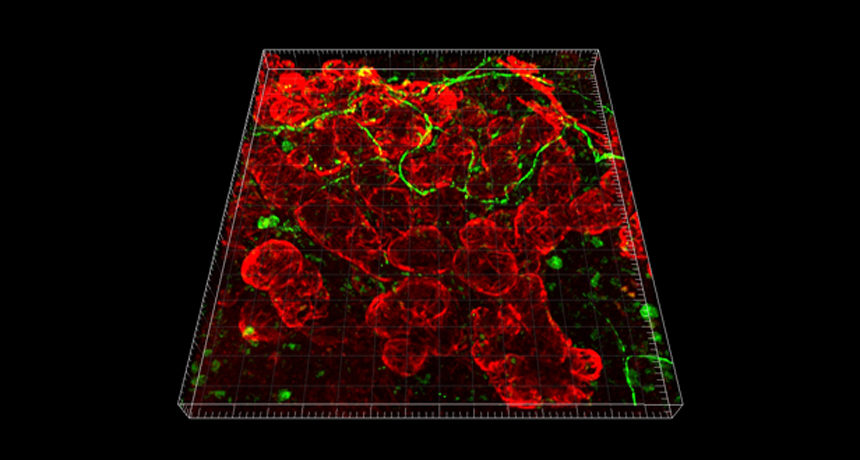Engineered salivary glands keep juices flowing
Organs grown in a lab dish do their job when transplanted into mice

GLAND TRANSPLANT Engineered salivary glands were successfully transplanted into mice lacking the organs. Mouse nerve fibers, green, infiltrate the transplanted tissue, red, in this micrograph.
T. Tsuji et al. Nature Comm. 2013






